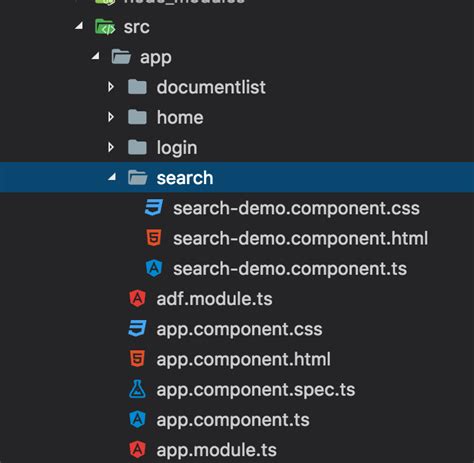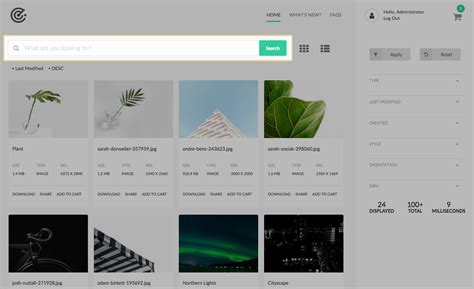Understanding Component Search Engines
A component search engine is a web-based tool that allows engineers and designers to search for and compare electronic components from various manufacturers and suppliers. These search engines aggregate data from multiple sources, providing users with a centralized platform to access comprehensive component information, including:
- Part numbers and descriptions
- Manufacturer details
- Technical specifications and datasheets
- Pricing and availability
- Compliance information (e.g., RoHS, REACH)
By leveraging advanced search filters and parametric data, component search engines enable users to quickly narrow down their options and find parts that meet their specific requirements.
Benefits of Using Component Search Engines
1. Time Savings
One of the primary advantages of using a component search engine is the significant time savings it offers. Instead of manually searching through numerous manufacturer websites or catalogs, you can access a vast database of components from a single platform. This streamlined approach eliminates the need to navigate multiple sites and allows you to quickly find and compare parts that fit your design requirements.
2. Comprehensive Part Information
Component search engines provide access to detailed information about each part, including technical specifications, datasheets, and compliance data. This comprehensive data helps you make informed decisions when selecting components for your PCB. You can easily compare key parameters such as:
- Electrical ratings (e.g., voltage, current, power)
- Physical dimensions and package types
- Operating temperature range
- Tolerance and accuracy
- Mounting options (e.g., through-hole, surface-mount)
Having access to this information ensures that you choose components that are compatible with your PCB design and meet the necessary performance requirements.
3. Cost Optimization
Cost is often a critical factor when designing a PCB. Component search engines can help you optimize your component selection to minimize costs without compromising performance. By comparing pricing information from multiple suppliers, you can identify the most cost-effective options for your project. Some search engines even provide tools to calculate the total cost of your bill of materials (BOM) based on the quantities required for your design.
Additionally, component search engines can help you identify alternative parts that offer similar functionality at a lower cost. This is particularly useful when dealing with obsolete or hard-to-find components, as you can quickly find suitable replacements that fit within your budget constraints.
4. Supply chain visibility
Ensuring a reliable supply chain is crucial for the success of your PCB project. Component search engines provide valuable insights into the availability and lead times of components from various suppliers. This information helps you make informed decisions about sourcing parts and managing your inventory.
By identifying components with stable supply chains and multiple supplier options, you can mitigate the risk of production delays due to part shortages or long lead times. Some search engines even offer real-time inventory data, allowing you to check stock levels and place orders directly through the platform.

Key Features to Look for in a Component Search Engine
When choosing a component search engine, consider the following key features to ensure it meets your needs:
-
Extensive Database: Look for a search engine with a comprehensive database that covers a wide range of components from multiple manufacturers and suppliers. The more extensive the database, the higher the likelihood of finding the right parts for your PCB.
-
Advanced Search Filters: A powerful search engine should offer advanced filters and parametric search capabilities. This allows you to quickly narrow down your options based on specific criteria such as package type, voltage rating, tolerance, and more. Look for a search engine that supports complex queries and allows you to save your search parameters for future reference.
-
Detailed Part Information: Ensure that the search engine provides access to detailed part information, including datasheets, technical specifications, and compliance data. This information should be easily accessible and presented in a clear and organized manner.
-
Pricing and Availability Data: Choose a search engine that offers up-to-date pricing and availability information from multiple suppliers. This will help you make informed decisions about sourcing components and managing your budget.
-
CAD Integration: Some advanced component search engines offer integration with popular CAD software, allowing you to directly import component data into your PCB design tools. This feature can significantly streamline your workflow and reduce the risk of errors when creating your schematic and layout.
-
User-Friendly Interface: A well-designed user interface is essential for a seamless search experience. Look for a search engine with an intuitive layout, clear navigation, and helpful features such as part comparison tables and saved search functionality.

Best Practices for Using Component Search Engines
To get the most out of your component search engine, consider the following best practices:
-
Define Your Requirements: Before starting your search, clearly define your component requirements, including electrical ratings, package type, environmental considerations, and any other critical parameters. This will help you focus your search and find parts that meet your specific needs.
-
Use Advanced Search Filters: Take advantage of the advanced search filters and parametric search capabilities offered by your chosen search engine. This will allow you to quickly narrow down your options and find components that fit your design requirements.
-
Compare Multiple Options: Don’t settle for the first component that meets your criteria. Use the search engine to compare multiple options from different manufacturers and suppliers. Consider factors such as pricing, availability, and compliance to make an informed decision.
-
Verify Component Data: While component search engines provide comprehensive part information, it’s always a good practice to verify the data with the manufacturer’s official documentation. Double-check critical specifications and ensure that the component meets your design requirements.
-
Consider Alternative Parts: If you encounter obsolete or hard-to-find components, use the search engine to identify suitable alternatives. Look for parts with similar specifications and performance characteristics that can be used as replacements in your design.
-
Collaborate with Your Team: Share your search results and component selections with your team members to gather feedback and ensure everyone is on the same page. Many search engines offer collaboration features, such as shared project folders and BOM management tools, to facilitate teamwork.

Example Usage Scenario
To illustrate the benefits of using a component search engine, let’s consider a real-world example. Suppose you’re designing a power supply circuit for your PCB and need to select a voltage regulator. Your requirements are as follows:
- Output voltage: 3.3V
- Output current: 1A
- Package type: SOT-23
- Operating temperature range: -40°C to +85°C
Using a component search engine, you can quickly find voltage regulators that meet these criteria. Here’s an example of how you might use advanced search filters to narrow down your options:
| Filter | Value |
|---|---|
| Function | Voltage Regulator |
| Output Voltage | 3.3V |
| Output Current | ≥1A |
| Package / Case | SOT-23 |
| Operating Temperature | -40°C to +85°C |
After applying these filters, the search engine returns a list of voltage regulators that fit your requirements. You can then compare the options based on factors such as price, availability, and efficiency to select the most suitable component for your design.
| Part Number | Manufacturer | Price (1000 pcs) | Availability | Efficiency |
|---|---|---|---|---|
| LM1117MPX-3.3 | Texas Instruments | $0.12 | In Stock | 80% |
| MIC5504-3.3YM5 | Microchip | $0.15 | 12 weeks | 90% |
| NCP1117ST33T3G | ON Semiconductor | $0.10 | In Stock | 85% |
Based on this comparison, you might choose the NCP1117ST33T3G voltage regulator due to its lower price, immediate availability, and adequate efficiency for your application.
FAQ
-
Q: What is a component search engine?
A: A component search engine is a web-based tool that allows engineers and designers to search for and compare electronic components from various manufacturers and suppliers. It provides a centralized platform to access comprehensive component information, including part numbers, technical specifications, pricing, and availability. -
Q: How does a component search engine help in PCB design?
A: A component search engine streamlines the part selection process in PCB design by offering a vast database of components, advanced search filters, and detailed part information. It helps designers find the most suitable components for their specific requirements, optimize costs, and ensure a reliable supply chain. -
Q: What are the key features to look for in a component search engine?
A: When choosing a component search engine, look for features such as an extensive database, advanced search filters, detailed part information, pricing and availability data, CAD integration, and a user-friendly interface. These features will enhance your search experience and help you make informed decisions when selecting components for your PCB. -
Q: Can a component search engine help me find alternative parts?
A: Yes, component search engines can help you identify alternative parts when dealing with obsolete or hard-to-find components. By using advanced search filters and comparing specifications, you can find suitable replacements that offer similar functionality and performance characteristics. -
Q: How can I ensure the accuracy of the component data provided by a search engine?
A: While component search engines strive to provide accurate and up-to-date information, it’s always a good practice to verify the data with the manufacturer’s official documentation. Double-check critical specifications and ensure that the component meets your design requirements before making a final selection.
Conclusion
Component search engines are invaluable tools for PCB designers, offering a streamlined and efficient way to find and compare electronic components. By leveraging the power of these search engines, you can save time, optimize costs, and ensure the selection of the most suitable parts for your project. With features like advanced search filters, detailed part information, and supply chain visibility, component search engines empower you to make informed decisions and accelerate your PCB design process.
When using a component search engine, remember to define your requirements clearly, take advantage of advanced search capabilities, compare multiple options, and verify component data with manufacturer documentation. By following best practices and leveraging the full potential of these tools, you can enhance your component selection process and create PCBs that meet your performance, reliability, and cost targets.
As technology continues to evolve, component search engines will undoubtedly play an increasingly important role in the world of PCB design. By staying up-to-date with the latest features and capabilities of these tools, you can stay ahead of the curve and streamline your design workflow. So, embrace the power of component search engines and unlock new possibilities for your PCB projects.

No responses yet